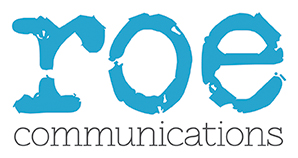Many business schools struggle to secure media coverage despite consistent efforts. They often question why their stories fail to attract attention:
- “We publish a story every week.”
- “We have the CEO of Microsoft speaking, why aren’t journalists interested?”
- “Our research has proven this, so why is it being ignored?”
Despite frequent outreach, their stories often don’t resonate with the press.
Internal pressures
We know that business school communicators are under immense pressure.
Our research with EFMD and Carrington Crisp has revealed the day-to-day challenges that they have to deal with. Here are just a few:
- Short-term thinking dictates their agendas
- Lack of budget whilst being asked to achieve more
- Lack of a clear strategic direction for their school
- A shortage of staff.
Additionally, communicators often feel pressured to satisfy multiple internal stakeholders, from faculty to Deans to programme teams.
Without anyone saying “no”, this often means the loudest voices win out over newsworthy stories.
The problem with trying to please everyone
Without someone to say “no”, some business schools end up putting out EVERY story, regardless of news value.
While this strategy might yield occasional results, typically it dilutes messaging and weakens long-term reputation-building efforts.
It can also frustrate journalists receiving low-value pitches, leading to poorer media relationships and less coverage overall.
Ultimately, communication teams find themselves having to explain poor media performance internally.
Strategy is your best friend
There’s no point in doing PR for PR’s sake.
Building a strong reputation starts with a well-thought-through PR strategy with clear objectives.
For internal teams, this means a shared understanding of the direction of travel.
A PR strategy gives communications teams more agency in-house and helps them focus on their agenda.
It also empowers teams to prioritise key activities and to say no to projects that don’t support their overall goals.
Before a school even comes close to developing a media pitch, it helps them to ask:
- Does this story help us achieve our stated goals?
- Does it appeal to our target audiences?
- Does it help us achieve our desired positioning?
Saying “no” becomes easier if the story doesn’t support the school’s strategy.
Think like a journalist
A common reason stories fail to gain traction is a lack of newsworthiness.
Journalists face enormous workloads, with 50% receiving over 100 pitches weekly.
They focus on content relevant to their readership and are rarely interested in self-promotional pieces.
Additionally, journalists face other pressures such as driving online engagement.
Business schools and their communications teams must develop a method for assessing news stories that consider the key elements that journalists look for. These can also be shared with others in the school, such as faculty.
Choosing the right angle is crucial – an angle offers a specific, compelling lens that makes a story more relevant. Effective angles include:
- Sharing a unique perspective
- Drawing comparisons and contrasts
- Highlighting a single, impactful issue
For more guidance on understanding how journalists think, we have created a checklist for business schools on assessing a media story.
If you have a research story to communicate, head to our article about securing better media coverage for your research stories.
Saying “no”: having clear guidelines for reviewing stories makes it easier to decline non-newsworthy ones.
A shift in perspective
Achieving better media coverage requires a shift from volume to strategy.
Business schools often feel compelled to share every story because of internal pressures, but a more selective, strategic approach can yield stronger results.
Schools can build better media relationships and enhance their public reputation by focusing on newsworthiness, aligning stories with strategic goals and thinking like journalists.
If you’d like to achieve more media coverage in 2025, get in touch!


